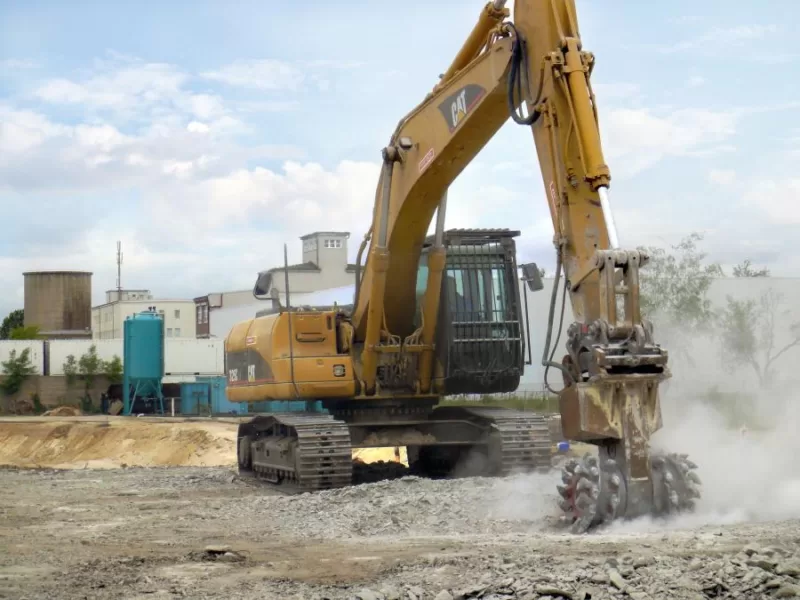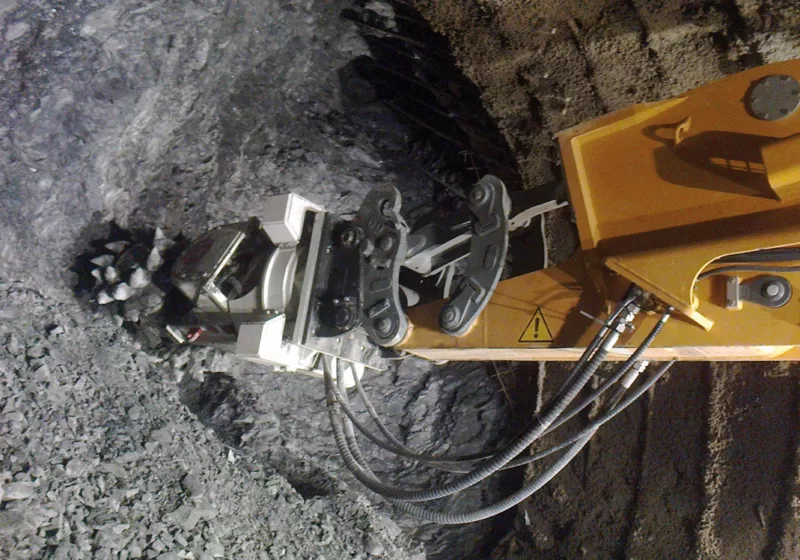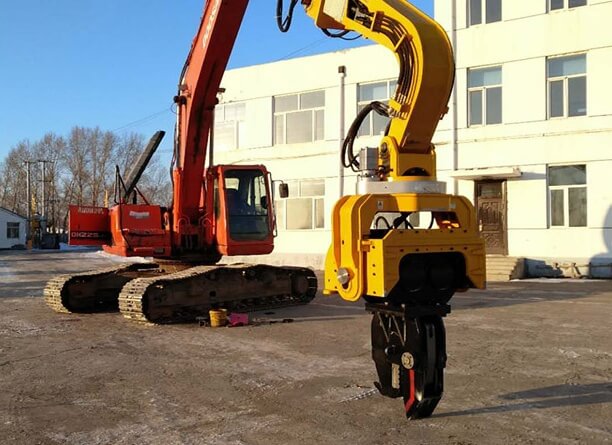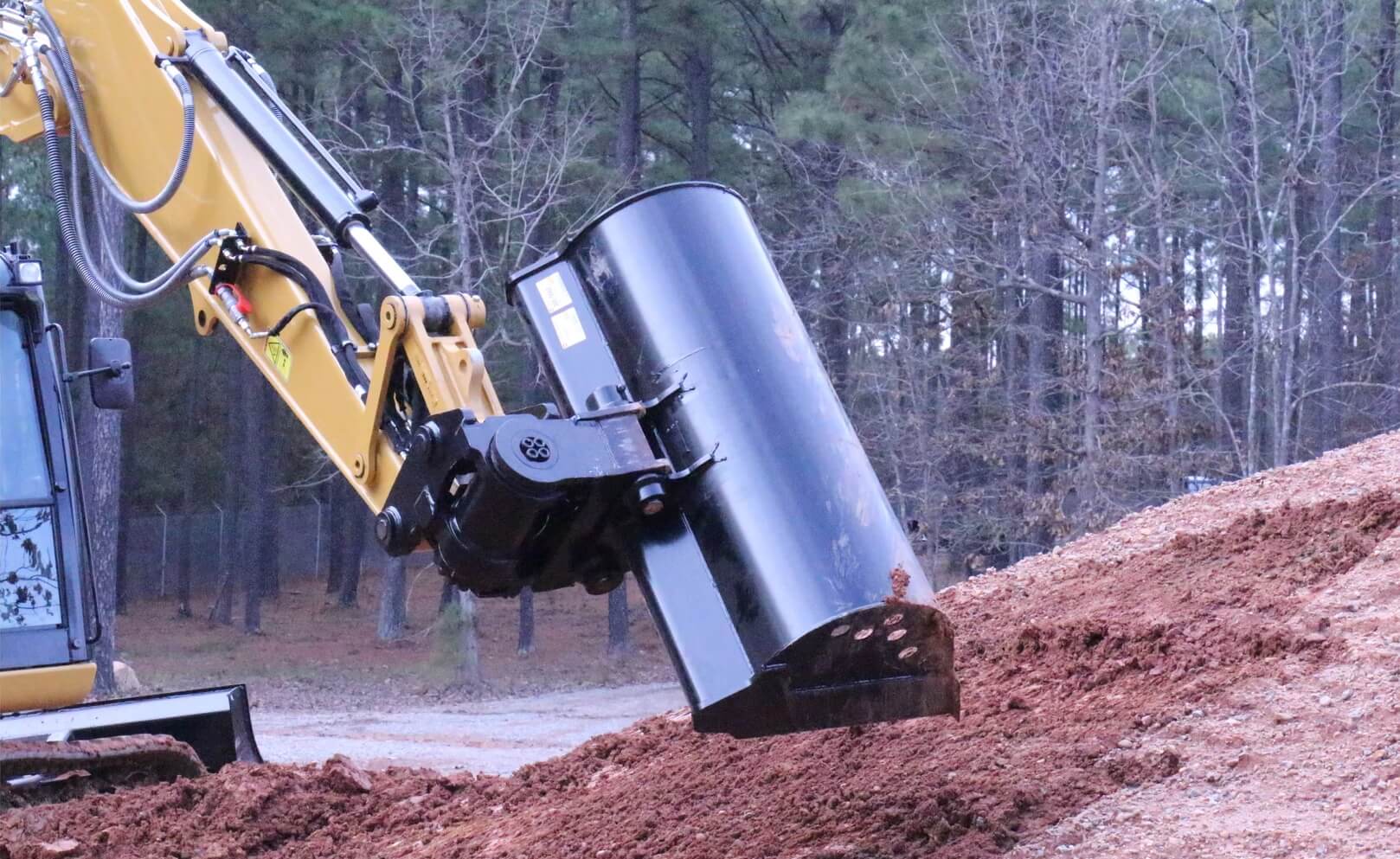In the realm of modern engineering, innovation is the driving force that propels industries forward. One such innovation that has garnered attention is the excavator drum cutter. This remarkable piece of machinery has ushered in a new era of efficiency and precision in various engineering projects. From construction to mining and environmental restoration, the hydraulic drum cutter has proven its worth in a myriad of applications, revolutionizing the way we approach complex tasks. In this article, we delve into the versatile nature of this technological marvel and explore the engineering projects it is best suited for.
Unveiling the Excavator Drum Cutter
At its core, the excavator drum cutter is a specialized attachment designed to be mounted on excavators. It harnesses hydraulic power to rotate a drum fitted with robust cutting tools. The combination of hydraulic power and high-speed rotation allows the cutter to tackle diverse materials with ease. The compact and adaptable nature of the drum cutter makes it an invaluable addition to the arsenal of modern engineering equipment.
-
Precision Demolition and Construction
One of the most significant applications of the excavator drum cutter lies in precision demolition and construction projects. Traditional methods of demolition often involve heavy machinery and explosives, which can be hazardous and environmentally detrimental. The drum cutter provides an alternative approach by allowing controlled and precise material removal. It can effortlessly cut through concrete, asphalt, and other hard materials, enabling engineers to dismantle structures with minimal noise, dust, and vibration. This level of precision also proves vital in construction tasks, where intricate shaping or precise material removal is required.
-
Trenching and Excavation
Trenching and excavation projects demand accuracy and efficiency to lay the foundation for pipelines, utilities, and underground structures. The hydraulic drum cutter’s ability to cut through challenging terrain, including rocky substrates, clay, and even permafrost, makes it an ideal choice for such tasks. The cutter’s adaptability to varying soil conditions ensures that trenches and excavations are consistent in depth and shape, reducing the need for additional manual labor and costly corrections.
-
Mining and Quarrying
In the realm of mining and quarrying, the hydraulic drum cutter has redefined efficiency and safety. Traditional mining techniques often involve explosive methods that are not only dangerous for workers but also environmentally harmful. The drum cutter offers a controlled and selective approach to material extraction. It can efficiently break down rock formations, extract minerals, and carve out tunnels while minimizing the risk to personnel and ecosystems. Moreover, its precision reduces waste by targeting specific ore bodies, optimizing resource utilization.
-
Environmental Restoration
The hydraulic drum cutter plays a crucial role in environmental restoration projects. Whether it’s riverbank reclamation, habitat restoration, or clearing invasive vegetation, the cutter’s precision ensures that only the targeted material is removed, leaving surrounding ecosystems intact. In river restoration, for instance, the drum cutter can selectively remove debris, silt, and vegetation without disturbing the natural flow of the watercourse. This delicate balance between precision and environmental stewardship is a hallmark of the drum cutter’s versatility.
-
Roadwork and Pavement Removal
Road maintenance and pavement removal often involve labor-intensive and time-consuming processes. The hydraulic drum cutter’s ability to effortlessly slice through asphalt and concrete paves the way for swift road repairs and upgrades. Its controlled cutting reduces the impact on surrounding infrastructure and minimizes disruptions to traffic flow. This application showcases how technology can enhance urban planning and infrastructure development.
Conclusion
In the ever-evolving landscape of engineering, the excavator drum cutter stands as a testament to human ingenuity and innovation. Its ability to adapt and excel in a wide range of applications, from precision demolition to environmental restoration, has transformed the way we approach complex engineering projects. This versatile tool not only increases efficiency and precision but also prioritizes safety and environmental sustainability. As technology continues to push boundaries, the Excavator Hydraulic Drum Cutter remains a shining example of how engineering marvels can shape a better and more sustainable future.
Challenges and Future Prospects
While the excavator drum cutter has undoubtedly revolutionized various engineering sectors, it is essential to acknowledge the challenges and ongoing developments in its application. One significant challenge lies in optimizing the cutter’s performance for specific materials and conditions. Different projects demand varying cutting techniques, drum configurations, and cutter tools. Engineers are continually working to enhance the cutter’s adaptability, allowing it to excel in even more diverse scenarios.
Furthermore, advancements in automation and remote operation are shaping the future of the hydraulic drum cutter. Integrating technologies like artificial intelligence (AI) and machine learning enables real-time monitoring and adjustment of cutting parameters, leading to improved efficiency and reduced operator workload. This automation not only enhances precision but also promotes worker safety by minimizing the need for personnel in hazardous environments.
Case Study: Urban Redevelopment
A remarkable case study demonstrating the versatility of the excavator drum cutter is its role in urban redevelopment projects. Consider a city aiming to repurpose an abandoned industrial site into a vibrant public space. The site is strewn with dilapidated structures and concrete foundations, requiring precise demolition while preserving historical elements. Traditional methods might risk damaging essential structures or releasing hazardous materials.
Here, the hydraulic drum cutter shines. Mounted on excavators, it selectively dismantles the structures, breaking down concrete foundations without compromising nearby trees or historical artifacts. The cutter’s precision ensures that only designated structures are removed, allowing for a seamless integration of past and present. The minimized noise and dust levels also prevent disturbances to the surrounding community, aligning with modern urban planning principles.
Conclusion: Shaping the Engineering Landscape
The Excavator Hydraulic Drum Cutter’s remarkable versatility underscores its transformative impact on engineering projects across various domains. From construction and demolition to environmental restoration and mining, this adaptable tool streamlines processes, enhances precision, and minimizes adverse effects on surroundings. As technological advancements continue to unfold, the drum cutter’s capabilities will likely expand, reshaping the engineering landscape and setting new standards for efficiency, safety, and sustainability.
As engineers, researchers, and innovators collaborate, we can expect further breakthroughs in hydraulic systems, cutting technologies, and automation. These advancements will unlock even more applications for the hydraulic drum cutter, allowing it to conquer challenges we haven’t even imagined yet. In the journey toward a more efficient, sustainable, and innovative future, the Excavator Hydraulic Drum Cutter stands as a testament to the power of human creativity and engineering excellence.
Environmental Impact and Sustainability
One of the most intriguing aspects of the excavator drum cutter is its potential to contribute to environmental sustainability. In an era where environmental consciousness is paramount, the cutter’s precision and controlled material removal offer a means to minimize ecological disruption. For instance, in mining and quarrying operations, traditional methods often lead to extensive habitat destruction and pollution. The hydraulic drum cutter, with its ability to selectively target valuable minerals and ores, reduces the ecological footprint of such activities. This not only conserves natural resources but also preserves delicate ecosystems.
Moreover, the drum cutter’s applications in environmental restoration are particularly promising








Leave A Comment